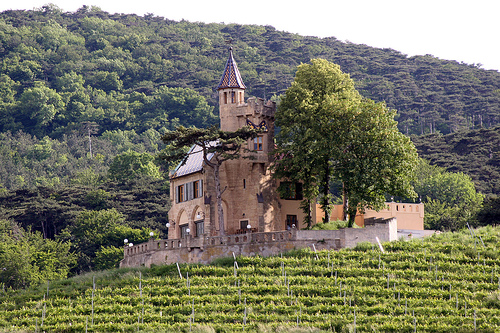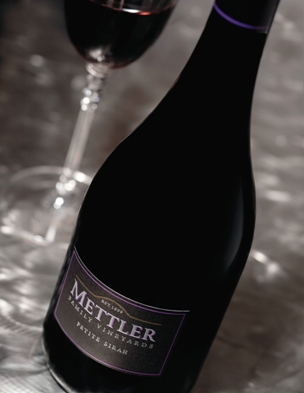 I spend a lot of time in the shop hanging out in our Argentine/Spanish section. Not only do our customers gravitate to that area, but I found my first bottle of love from a non-US producer in that aisle: (Altos de las Hormigas) Malbec.
I was hesitant to talk about Malbec in my mini series, Wines for Fall, because there are other grape varietals (e.g. Petite Verdot, Petite Sirah) that are lesser known and lesser consumed, but no less worthy of our attention this time of year. But I realized there was no real reason to keep my personal favorite off the list - and at least once a week I introduce a customer to a bottle of Malbec, so that proves there are still some grasshoppers out there who need to know of this magical varietal!
I spend a lot of time in the shop hanging out in our Argentine/Spanish section. Not only do our customers gravitate to that area, but I found my first bottle of love from a non-US producer in that aisle: (Altos de las Hormigas) Malbec.
I was hesitant to talk about Malbec in my mini series, Wines for Fall, because there are other grape varietals (e.g. Petite Verdot, Petite Sirah) that are lesser known and lesser consumed, but no less worthy of our attention this time of year. But I realized there was no real reason to keep my personal favorite off the list - and at least once a week I introduce a customer to a bottle of Malbec, so that proves there are still some grasshoppers out there who need to know of this magical varietal!
Malbec is THE Argentine (red) grape of mass export to the US. (I tried to find the exact figure to back this up, but was unable to do so! Please feel free to comment below if you know the answer...). When I was first introduced to Malbec some years ago it was considered an 'up and coming' project in Argentina. The vines were still young (not that they aren't still now, but every year helps!) and so lacked depth, concentration and, key word, ripe berry fruit. The wines tended toward the more vegetal, or "green" flavor profile as a result. As a new wine-exporting/producing nation, there also existed a natural lack of funding, interest (from winemakers and consumers across the globe) and modern technology. These facts could make finding truly phenomenal Malbec a bit more of a challenge. In just the last 10-15 years or so however, the funding is there, Mendoza is better known and appreciated for its happy climate to grow Malbec, and even curious winemakers from all over the world are happy to jump on a plane and get in the fray.
The result? Malbecs of many shapes and sizes are in the US market offering a range of tremendous flavor.
I find it thrilling to help others navigate this range of possibilities. The undercurrant to Malbec tends to be: dark fruits (like the plumbs or blackberries you often find in Cabernet Sauvignon or Merlot); spice (sometimes simply black pepper, other times more exotic spices you may play with in the kitchen); earth (think outdoors, woodsy, wet soil or even a touch of saddle leather); gentle grip (not too dry, but evident tannin); and solid acidity (mouthwatering & food-friendly). What makes each (good, non-vegetal or bell-pepper tasting) Malbec fun to expore is which of these elements is/are more evidant and - most important - what role the winemaker has played in coaxing a truly lushy, soft, velvety (or not) mouthfeel.
I've come to know and love the softer, lusher Malbecs (Melipal makes a great example); the earthier style (I'm a fan of Nieto Rsv Malbec); or the berry-forward, unreserved, slightly more rustic basic level offerings like Altos las Hormigas (their Reserva is definitely bigger, bolder and more lush than their $10/bottle offering).
As for the Fall connection? Let's turn to food pairings, of course! But, wait, what's my rule of thumb on this again? Look to the culture from whence the wine came! So, let's also not forget Argentines consumes a LOT of beef. Throw that herb-encrusted steak on the grill and, well, I think your inner child will have no choice but to emerge. Then again... anything on the grill makes Malbec a great choice. Whenever I host a BBQ, I have a case on hand. Malbecs are approachable yet intriguing and ever-so worthy of grilled fare.
What's your favorite Argentine Malbec of choice? Or do you head to France, where this grape got its start, for a Cahors selection?
 Perhaps like you, earlier this week I learned the father of Pinot Noir in Oregon, David Lett of Eyrie Vineyards, passed away at the young age of 69.
If you're familiar with the book Judgement of Paris or recently caught the Indie Film "Bottle Shock" you know a few Americans in the '70s went "to the mattresses" to prove the quality of New World wines, as compared with those in the Old World. The story of their dramatic debut on the world's wine stage is noteworthy for many reasons. But first, in my mind, is what had to happen before they took their wines overseas. First they had to have the fire in the belly and the chutzpa to act: pioneers who took great risk in what Was Done and what was Not Done, to give birth to a much larger, global and hugely profitable industry.
Perhaps like you, earlier this week I learned the father of Pinot Noir in Oregon, David Lett of Eyrie Vineyards, passed away at the young age of 69.
If you're familiar with the book Judgement of Paris or recently caught the Indie Film "Bottle Shock" you know a few Americans in the '70s went "to the mattresses" to prove the quality of New World wines, as compared with those in the Old World. The story of their dramatic debut on the world's wine stage is noteworthy for many reasons. But first, in my mind, is what had to happen before they took their wines overseas. First they had to have the fire in the belly and the chutzpa to act: pioneers who took great risk in what Was Done and what was Not Done, to give birth to a much larger, global and hugely profitable industry.

 I spend a lot of time in the shop hanging out in our Argentine/Spanish section. Not only do our customers gravitate to that area, but I found my first bottle of love from a non-US producer in that aisle: (Altos de las Hormigas) Malbec.
I was hesitant to talk about
I spend a lot of time in the shop hanging out in our Argentine/Spanish section. Not only do our customers gravitate to that area, but I found my first bottle of love from a non-US producer in that aisle: (Altos de las Hormigas) Malbec.
I was hesitant to talk about  Ok, so it isn't really spelled that way.... But it certainly makes me want to run out and get some! Zweigelt, that is, a little Austrian red wine goodness that's perfect for this time of year. (It's said Z-vye-gelt, if my title was of no use to you this delightful, holiday Monday!)
What? Austrian wine? WHAT?!
Ok, so it isn't really spelled that way.... But it certainly makes me want to run out and get some! Zweigelt, that is, a little Austrian red wine goodness that's perfect for this time of year. (It's said Z-vye-gelt, if my title was of no use to you this delightful, holiday Monday!)
What? Austrian wine? WHAT?!
 Once again I find myself scribing another
Once again I find myself scribing another  Red Sox fans were so wrapped up in ending the 86-year Championship drought
Red Sox fans were so wrapped up in ending the 86-year Championship drought  'Going with your gut is one of the most important skills you can have in the wine world,' believes a great colleague of mine who's been doing this since before I was born. Today I'm applying that skill to my wine blogging. No doubt there are other wine news and events ideas circulating the world wide web that may be valid contenders for my Friday post. Usually there are several. But today, today, I'm going with my gut before I get side tracked with all the possibilities. Decanter's
'Going with your gut is one of the most important skills you can have in the wine world,' believes a great colleague of mine who's been doing this since before I was born. Today I'm applying that skill to my wine blogging. No doubt there are other wine news and events ideas circulating the world wide web that may be valid contenders for my Friday post. Usually there are several. But today, today, I'm going with my gut before I get side tracked with all the possibilities. Decanter's  What better way to continue our discussion about wines perfect for fall than to start the month of October with some banter about a monster wine? Petite Sirah (note the "i" in Sirah) is also a stealthy little operator, or the masked creature standing on your front steps in just 30 days time. Boo-ha-ha-ha-ha-ha!!!
"What the heck is she getting at today," you ask with incredible anticipation and a smile dancing at the corners of your mouth?
What better way to continue our discussion about wines perfect for fall than to start the month of October with some banter about a monster wine? Petite Sirah (note the "i" in Sirah) is also a stealthy little operator, or the masked creature standing on your front steps in just 30 days time. Boo-ha-ha-ha-ha-ha!!!
"What the heck is she getting at today," you ask with incredible anticipation and a smile dancing at the corners of your mouth? Last week here in Beantown the weather went from gorgeous fall to stormy insanity. In some ways this is a wine buyer's dream. There's no other time of year where you can pick wines for the weekly tasting to straddle the warmer/colder, sunnier/rainier line and scratch almost every consumer's itch. And since there's so much new juice on the market, we can also introduce our customers to new products. See? There's always a silver lining (even when you now have a natural swimming pool in the backyard...)!
But I'm jazzed about my topic for this Monday morning musing for another reason, too... remember last week we started talking about fall wine options? Well, for my white wine readers and
Last week here in Beantown the weather went from gorgeous fall to stormy insanity. In some ways this is a wine buyer's dream. There's no other time of year where you can pick wines for the weekly tasting to straddle the warmer/colder, sunnier/rainier line and scratch almost every consumer's itch. And since there's so much new juice on the market, we can also introduce our customers to new products. See? There's always a silver lining (even when you now have a natural swimming pool in the backyard...)!
But I'm jazzed about my topic for this Monday morning musing for another reason, too... remember last week we started talking about fall wine options? Well, for my white wine readers and  I've been running from industry tasting to industry tasting the last few weeks, not only tasting the new releases and other new wines available this fall, but also picking up tidbits here and there about what's what and otherwise on the minds of winemakers, importers, distributors and, of course, consumers. I find it absolutely fascinating to compare these 'hallway musings' with what I read on various blog sites and in on-line trade mags. This gives me a sense of whether these conversations are local to the MA/New England market, or if they are more global. Today I can't help but give you a snapshot of these ruminations, hopefully giving you the chance to be "a fly on the (wine trade) wall"!
The question of the strengthening dollar. I can't tell you how many folks have asked why wine prices are still high when the dollar is getting stronger (granted, a relative concept). No surprise, it's on everyone's mind. I can't wait myself! Well, in uncertain economic times, no one is more anxious to start sharing the 'winnings' than the importers of fine wines from Europe. After all, wine does go sour eventually! If they can't unload it then they're the ones who will really be hurting. The thing is, the wine already on shelves is wine that was purchased when the dollar was particularly weak. I think we'll see things start to turn around soon enough, though. Dr. Vino seems to have the same take. Importers are eagerly biding their time, waiting for the wares they are now buying overseas (at a better price) to come to market here in the U.S.. Check out
I've been running from industry tasting to industry tasting the last few weeks, not only tasting the new releases and other new wines available this fall, but also picking up tidbits here and there about what's what and otherwise on the minds of winemakers, importers, distributors and, of course, consumers. I find it absolutely fascinating to compare these 'hallway musings' with what I read on various blog sites and in on-line trade mags. This gives me a sense of whether these conversations are local to the MA/New England market, or if they are more global. Today I can't help but give you a snapshot of these ruminations, hopefully giving you the chance to be "a fly on the (wine trade) wall"!
The question of the strengthening dollar. I can't tell you how many folks have asked why wine prices are still high when the dollar is getting stronger (granted, a relative concept). No surprise, it's on everyone's mind. I can't wait myself! Well, in uncertain economic times, no one is more anxious to start sharing the 'winnings' than the importers of fine wines from Europe. After all, wine does go sour eventually! If they can't unload it then they're the ones who will really be hurting. The thing is, the wine already on shelves is wine that was purchased when the dollar was particularly weak. I think we'll see things start to turn around soon enough, though. Dr. Vino seems to have the same take. Importers are eagerly biding their time, waiting for the wares they are now buying overseas (at a better price) to come to market here in the U.S.. Check out